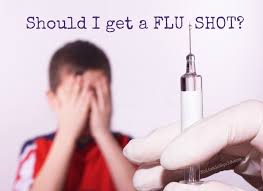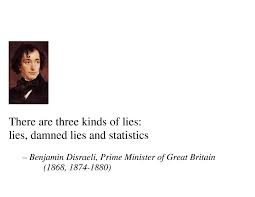
I had a promise to myself that I would stay away from vaccine posts for a while. I’ve had my fair share of heat on the internet about my choice not to vaccinate our kids and the reasons behind it. There’s even blog posts about my blog posts and how I am choosing to ignore the science about vaccines and their effectiveness.
Attacks on me don’t make me that fired up anymore but when my own clients and friends are victims of flu shot bullying, I have to step in. I had a couple women on the verge of tears because they were given the, “If you don’t get the flu shot, you could die” speech from her doctor.
I also take care of gentleman that vehemently opposed getting the flu shot but because he has been labeled ‘immuno-compromised.’ The bully won. He got the flu shot and as a result had a massive seizure that almost took his life. I’m not saying the flu shot will cause a massive seizure. The doctor called the gentleman to apologize and admit that the flu shot was the most likely trigger in the seizure. “Oops, my bad.”
 And there’s the countless pregnant moms that ask, is it safe? “My OB is pressuring me into getting a flu shot.” All I can say is, “I don’t know…neither do they, they have never tested it on pregnant women.”
And there’s the countless pregnant moms that ask, is it safe? “My OB is pressuring me into getting a flu shot.” All I can say is, “I don’t know…neither do they, they have never tested it on pregnant women.”
I truly don’t care if you get a flu shot or not. What I care about is that your decision wasn’t based on flu shot bullying. The problem is that emotions are heavily tied to vaccines so it becomes heated and the bully takes it as a personal attack when their recommendation get shoved back in their face.
You know what else gets ignored with flu shot bullying? The science. As a personal hero of mine, Dr. James Chestnut says, “science isn’t about trying to be right. Science is about trying to figure out what is right.” Emotions and science are in the eye of the beholder. Science is data, but it still requires interpretation and ethical reporting to make something valid.
[bctt tweet=”Science isn’t about trying to be right. Science is about trying to figure out what is right. – Dr. James Chestnut”]
Because so much of what is reported in the news is one’s interpretation of the data skewed to get you to make a change in their favor, there’s a massive disconnect between what the actual data interpretation and the actual data stats. This isn’t just news media but doctors too. Clinicians are trusting of the data’s interpretation so he/she can best serve the patient. The problem is that most clinicians don’t have the time to check the actual data. They are trusting someone else with great credentials to be honest and ethical in reporting their results.
Lipitor is a great example.
The interpretation of the data states a 50% reduction in heart attacks. The actual data says a 1% reduction in heart attacks. How can the interpretation be so different than the actual data? The messenger has something to gain.
In Lipitor, for every 100 people that took Lipitor in the study, 2 people had a heart attack. I might add, there was also a change in diet. For every 100 people that took the placebo, 3 people had a heart attack.
You and I would probably interpret that only 1 in 100 people benefit from Lipitor. Might I add again that it took 3 1/2 years to see those ‘benefits?’ How it gets interpreted and reported to you, the clinician, and other media outlets is that 3 minus 2 equals 1. 1 is half of 2. Since 1 is half of 2 and 1 was the difference between the Lipitor and Placebo heart attack groups, they conclude that 1 is equal to a 50% (half) reduction in heart attacks. Is that sketchy or sketchy?
With millions upon millions of people on Lipitor, has the incidence of heart disease and heart attacks diminished? Not at all. By interpreting the data correctly, this wouldn’t be a surprise. If the drug company’s interpretation was correct, heart disease would have been reduced 50% over the past 20 years. Instead, it still climbs.
You will see the flu shot is no different. I’m not saying there isn’t any merit in the intent behind the flu shot. The intent is noble, to hopefully save thousands of lives. The intent in most high-income countries is to reduce the mortality burden of the flu by targeting the people over age 65 since ‘they are the most immune compromised.’
The problem is that it’s well documented that the elderly don’t produce a great antibody titer with vaccines. In other words, old people don’t respond well to vaccines because their immune system isn’t strong enough to respond to it. Since this is known all over, we have campaigns to get everyone from 6 months and older a flu shot to protect the high risk elderly and chronically ill. This is the plea for herd immunity.
The irony is that elderly are still recommended a flu shot knowing they don’t respond well to it. They are told to get it anyway…just because that’s what we have always done.
Another problem with reporting the benefits of the flu shot is that the benefits get massively exaggerated because the studies don’t have clear end point definitions. They use a term called ‘all cause mortality.’ They generalize the end point opposed to being specific like whether or not someone got the flu or died from the flu.
This would be like a weight loss program saying everyone lost weight yet allowed everyone to initially weight with a snowsuit and heavy boots on but end weight buck naked. Everyone did lose weight.
Using the term ‘all cause mortality‘ allows one to boast that less car accident deaths, less deaths due to drowning, less killing in Central Park, and less deaths due to rabid skunk bites in winter months, all because someone got the flu shot. Ridiculous or ridiculous?
They also use a term called frailty selection bias. In other words, the people most likely to die in a winter season are also the people LEAST likely to get the flu shot. Within a study this is usually reported that they adjusted for ‘frailty selection bias.’ In other words, when they study the flu shot (past year’s incidence rates), they remove all the people that are most likely to die and only report the results from the healthy. Historically, it’s these ‘healthy’ people that are the most likely to get a flu shot.
If you look at the history of flu vaccine rates, in 1980 only about 15% of the population was getting a flu shot. Today more than 65% of the population gets a flu shot. What has happened to flu related mortality in the elderly since 1980? Oh, it’s increased.
Then why does flu shot bullying occur? Dogma, not science.
When new cohort studies occur that don’t adjust for ‘frailty selection bias’ they conclude that there’s little to no mortality benefit for the elderly to get a flu vaccine. When you add the frail people that don’t get the shot back into the study results, there’s no benefit at all. There’s no reduction in flu cases, reduction in flu deaths, nor any reduction in flu-related deaths.
The paradox is that despite no decline in the elderly as vaccine coverage quadrupled, the vaccine gets reported as reducing half of ALL winter deaths. Check this out from this analysis of cohort studies. This is from the American Journal of Epidemiology titled ‘Influenza Vaccination and Mortality: Differentiating Vaccine Effects from Bias.‘
“We found that flu shots reduced all-cause mortality among elderly Kaiser Permanente members by 4.6% during 9 laboratory defined flu seasons in Northern California. Other researchers have reported that flu shots reduce mortality by much greater amounts. In a meta-analysis of results from 20 cohort and case-control studies. Voordouw et al. (6) found that flu shots reduce winter deaths by 50%, on average; and in a more recent study, Nichol et al. (19) reported a 48% reduction in all-cause mortality among the elderly during flu season. However, Simonsen et al. (11, 12, 20) found that excess mortality attributable to influenza has only been 5%–10% on average during flu seasons in the past several decades. They argued that flu shots could not possibly have prevented more deaths than the 5%–10% of deaths that were flu-related (11–13). Our estimate of excess mortality during flu season was 7.8%, which is consistent with Simonsen et al.’s nationwide estimate but lower than estimates made by others (21–23).
This excess mortality of 7.8% is what we found in a population with over 60% vaccine coverage. Our findings suggest that had none of the elderly been vaccinated, excess mortality during flu season would have averaged about 9.8%. We infer that our 4.6% VE estimate amounts to a 47% reduction (4.6/9.8 = 47%) in the number of flu attributable deaths that would have occurred had none of the elderly been vaccinated.”
So these researchers are saying that the other guys reporting a 50% and 48% reduction in ALL deaths during the winter by just getting a flu shot is ridiculous and exaggerated…it’s only a 47% reduction in deaths. Remember, that all flu shot studies are measured against reducing ALL deaths during the winter. These people are saying that by getting a flu shot, you reduce your chances at dying from frostbite, dogbite, drowning, heart disease, cancer, diabetes, and Al Qaeda attacks. ALL CAUSE means all imaginable causes of death.
These guys also looked at 9 flu seasons of people enrolled in Kaiser in Nor Cal since they can track who got the flu vaccine or not and said over those 9 years, we can estimate the vaccine was only 4.6% effective. They also so say that worse case scenario is that 7.8% (midpoint of the 5-10%) of deaths in a flu season can be attributed to flu deaths. And if no one got a flu shot, that would only raise to 9.8% of deaths being attributed to the flu.
Where the interpretation gets absolutely ridiculous is how they report the data. You or I would use elementary school math to say that if no one got a flu shot, there may be a 2% increase in deaths from the flu (9.8% – 7.8%). What they do to back up their ridiculous claim of 47% reduction in death rates of anything (falling off a mountain, killer bee attacks, botched surgery) by taking their measly 4.6% VE (Vaccine Effectiveness) number averaged over 9 years of people getting the flu shot and divide that into 9.8% (the worst case scenario of deaths related to the flu in a season if no one gets a shot) to say that if you get a flu shot, you decrease your chance of dying from ANYTHING 47%.
This is what gets reported to your doctor, the news media, and every grocery store offering flu shots. Why do they do it? Dogma, not science. The dogma that the most likely to die are not vaccinated and the least likely to die are the vaccinated. Remember that there is a four fold increase in vaccinated population from 1980 until today yet no change in deaths reported each year from the flu.
Our hospitals and governments get this information and start making mandates on policy to get the flu shot because, ‘if we can lower death rates by 50%, why wouldn’t we support it?’ You would have to be a terrorist or hate babies and puppies to withhold an intervention that can reduce death rate, from anything and everything, 50%.
If you look back in history, there was a pretty bad flu season in 1957-58 season. Due to major pressures on the surgeon general, he recommended flu vaccines for everyone with chronic debilitating disease, pregnant women, and those over aged 65 in 1960.
Whenever there is a major problem in society, people look to the government to make a decision to help out the greater good. So the flu shot gets recommended to ‘high risk’ populations. The problem is that these recommendations were made without any data to support it. This recommendation itself is now being used as evidence for the need for flu shots today.
Because of this long standing recommendation (based on nothing but pressure) this is why you never see randomised controlled, double blinded studies in elderly, pregnant, and chronically ill for flu vaccines. Because they get the faulty reports that the flu vaccine reduces deaths by 50%, it becomes ‘unethical’ to to put these groups of people in a placebo style study for an intervention. What’s unethical is that they are basing their decision on a recommendation with no data to support their ethics.
Here’s what we can sum up from the science of the flu shot.
1. Does the flu shot work? We don’t know. It all depends on who you ask and how they interpreted the data.
2. Is the flu shot safe? We don’t know. It’s widely reported that less than 10% of medical adverse reactions are reported so to comment on the safety is virtually impossible since there also is no data.
3. Why does my employer require getting a flu shot or I’m fired? We don’t know. They are basing a requirement from a recommendation that had no data to support it 50 years ago and using that recommendation as proof that you need the flu shot as a condition of employment.
References:
Voordouw BC, van der Linden PD, Simonian S, et al. Influenza vaccination in community-dwelling elderly: impact on mortality and influenza-associated morbidity. Arch Intern Med. 2003;163(9):1089–1094
Nichol KL, Nordin JD, Nelson DB, et al. Effectiveness of influenza vaccine in the community-dwelling elderly. N Engl J Med. 2007;357(14):1373–1381.
Simonsen L, Reichert TA, Viboud C, et al. Impact of influenza vaccination on seasonal mortality in the US elderly population. Arch Intern Med. 2005;165(3):265–272.
Simonsen L, Taylor RJ, Viboud C, et al. Mortality benefits of influenza vaccination in elderly people: an ongoing controversy. Lancet Infect Dis. 2007;7(10):658–666.
Simonsen L, Clarke MJ, Stroup DF, et al. A method for timely assessment of influenza-associated mortality in the United States. Epidemiology. 1997;8(4):390–395.
Simonsen L, Viboud C, Taylor RJ. Effectiveness of influenza vaccination [letter]. N Engl J Med. 2007;357(26):2729–2730
Thompson WW, Shay DK, Weintraub E, et al. Mortality associated with influenza and respiratory syncytial virus in the
United States. JAMA. 2003;289(2):179–186.
Simonsen L, Blackwelder WC, Reichert TA, et al. Estimating deaths due to influenza and respiratory syncytial virus [letter].
JAMA. 2003;289(19):2499–2500.
Monto AS. Epidemiology of influenza. Vaccine. 2008; 26(suppl 4):D45–D48.
http://innatechoice.com/viewvideo.cfm?id=1F306184-A5E5-6F58-2B079288EEF7DAD9&return=webinars.cfm



1 Comment